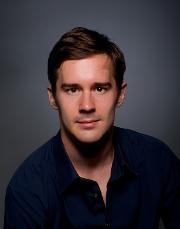Antal Martinez disputerer for ph.d-graden i helsevitenskap og vil offentlig forsvare avhandlingen:
“Mathematical Models of Optimal Antibiotic Treatment”
 Avhandlingen er tilgjengelig her!
Avhandlingen er tilgjengelig her! Prøveforelesning starter kl. 14:15
Trial lecture over the assigned subject will be given at 14:15
"The long way of elimination of tuberculosis in Norway"
Disputas starter kl. 16:15
Disputasen vil bli strømmet her!
The defense will be streamed here!
Opptak av disputasen vil være tilgjengelig i en uke.
The auditorium will be closed to the public because of the corona outbreak. The defense will be streamed here:
A recording of the defense will be available for one week.
De som ønsker å opponere ex auditorio kan sende e-post til leder av disputasen (guro.forsdahl@uit.no ).
Opponents ex auditorio should sign up to the leader of the defense by e-mail (guro.forsdahl@uit.no)
Populærvitenskapelig sammendrag av avhandlingen
Tuberculosis (TB) is a deadly disease that results in 1.5 million related deaths worldwide each year. Due to the complexities of the disease, even for the drug susceptible form, the treatment takes six months and requires a cocktail of four different antibiotics. For those who are infected with drug resistant strains, or cases where the bacteria developed drug resistance to the key drugs during and after (unsuccessful) treatments, the treatment regimens take even longer.
In the drug resistant case, the length of treatment, the perceived and real stigma associated with the disease, and the side-effects of treatment itself on top of the disease makes it a miserable experience. As one patient summed up in a study: “I cry every day”. Arguably, by improving the treatment success rates and effectiveness of the for the drug susceptible tuberculosis treatments, the prevalence of drug resistant cases can also be reduced.
Improving treatments however is a complex issue. This problem is well illustrated by the fact that even though of one of the current key drugs, rifampicin, has been introduced for the treatment of tuberculosis in the late 1960s, its use still not optimized. As a result, there are still clinical trials aimed at finding optimal treatment regimens, strategies, or dosing.
Optimizing the use of antibiotics faces multiple challenges, one of which is the apparent slowdown in elimination rates of bacteria. When bacteria are exposed to antibiotics, the majority of bacteria can often be killed rapidly, however the remaining bacteria may take a long time to be killed. It is often assumed that this slowdown can affect the treatment of patients, however has not been proven conclusively. This is partly because during treatments the immune system eliminates bacteria as well in addition to antibiotics. The impact of the immune system is well illustrated by the fact that bacteriostatic antibiotics (antibiotics that only prevent the replication of bacteria) often work just as well for treatments as bactericidal antibiotics (antibiotics that kill bacteria). In tuberculosis it has been shown that in “successful treatments” (no relapse after the termination of treatment), viable bacteria may still exist in the patients. In addition to knowledge gaps in modeling the immune system, and the behavior of bacteria in vivo in general, our ability to evaluate and analyze these problems is hindered by our ability to measure the amount of bacteria (bacterial loads) in patients. In tuberculosis for example, bacterial loads in patients are assessed via sputum bacterial count measurements which only offer an incomplete picture. This is well illustrated by the fact that even though there are no bacteria detected in the sputum after the first 2-3 months of the treatment, it is necessary to treat for the full 6 months in order to avoid relapse. In cases where direct measurements are not possible, mathematical modeling approaches have been shown to be useful in the decision making processes. As a result, in recent years theoretical and modeling approaches have been on the rise in tuberculosis clinical trials as well, complementing the traditionally empirical approaches in the field in order to further optimize treatments.
In this thesis I expand the mathematical toolbox of modeling the slowdown in elimination. I use these methods to analyze a clinical trial on high rifampicin doses in tuberculosis treatments in order to assess the impact and possible mechanical causes of the observed slowdown in bacterial elimination within the trial. Ultimately, these results and approaches contribute to our understanding why certain treatment approaches are more effective than others and as a result aid in optimizing current and future treatment regimens.
Veiledere
Forsker/researcher Pia Abel zur Wiesch,Institutt for Farmasi, UiT Norges arktiske universitetet
Biveiledere/co-supervisors Postdoktor Fabrizio Clarelli, Institutt for Farmasi, UiT Norges arktiske universitetet, Seniorforsker Roland Regoes, ETH Zürich
Bedømmelseskomité
Professor Christoph Lange, Research Center Borstel and University of Lübeck, Germany – 1. opponent, Professor Dan Anderson, Uppsala Universitet, Sverige – 2. opponent, Førsteamanuensis Elizabeth Aarag Fredheim, Institutt for farmasi, Det helsevitenskapelige fakultet, UiT Norges arktiske universitet – leder av komité
Disputasleder: Instituttleder Guro Forsdahl, Institutt for Farmasi, Det helsevitenskapelige fakultet, UiT Norges arktiske universitet